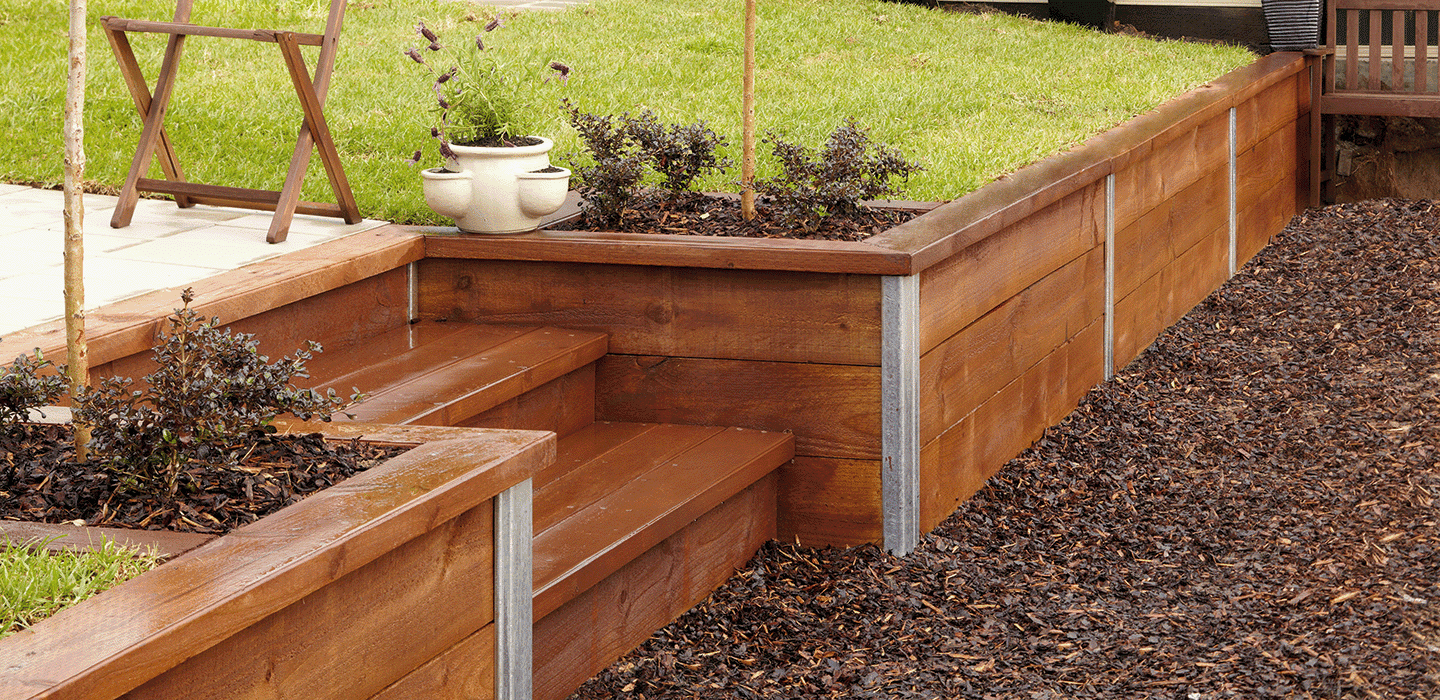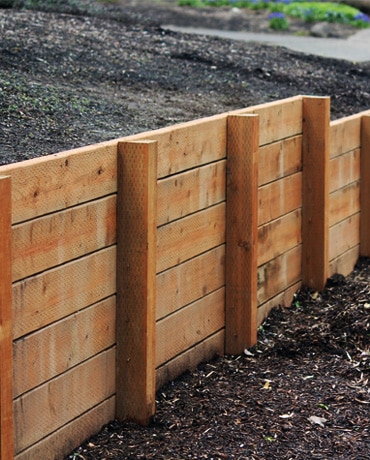The Ultimate Overview to Preserving Retaining Walls Sunshine Coast
The Ultimate Overview to Preserving Retaining Walls Sunshine Coast
Blog Article
Enhancing Home Security: The Role of Retaining Walls in Soil Retention and Erosion Control
Maintaining walls stand as silent guardians, playing an important function in soil retention and disintegration control. By discovering the subtleties of various types, design factors to consider, construction strategies, and upkeep pointers associated with retaining walls, a much deeper understanding of their crucial role in enhancing home stability emerges.
Importance of Retaining Walls in Stability
The value of keeping walls in ensuring security within landscapes can not be overemphasized. Retaining wall surfaces play a crucial function in holding back dirt, stopping disintegration, and producing level surfaces in sloped locations. By offering architectural assistance, keeping wall surfaces help to rearrange side stress brought on by dirt, avoiding landslides and slippage. Along with enhancing the aesthetic charm of a property, preserving wall surfaces add to the overall security and performance of exterior spaces.
Maintaining wall surfaces are particularly essential in unequal or sloping surfaces where dirt erosion is a common incident. Without sufficient assistance, dirt disintegration can result in the destruction of landscapes, compromising the integrity of frameworks and posturing risks to citizens. Retaining walls function as obstacles, maintaining the dirt and preventing it from shifting downhill during heavy rains or various other ecological stress factors.
In addition, keeping walls use lasting benefits by minimizing upkeep costs connected with dirt disintegration and land instability. By spending in properly designed keeping walls, residential or commercial property owners can guarantee the durability and sustainability of their landscapes while promoting a risk-free and visually appealing setting.

Types of Retaining Walls for Erosion Control
Frequently utilized in landscape design and civil engineering jobs, various kinds of keeping walls function as efficient options for disintegration control in varied surface problems. Gravity keeping walls are sturdy frameworks that count on their weight to resist the stress of the dirt behind them. They appropriate for reduced to medium elevation applications and are commonly constructed from concrete or stone. Cantilever retaining wall surfaces, on the other hand, are designed with a thicker base and utilize a lever arm to hold up against the dirt pressure. These walls are frequently used in locations where area is restricted.
For taller wall surfaces or where space is a restriction, anchored retaining wall surfaces are usually used. These wall surfaces utilize cables or strips that are anchored right into the soil or rock behind the wall surface to offer added assistance. An additional kind, the sheet stack maintaining wall surface, is ideal for locations with soft dirt. Retaining Walls Sunshine Coast. These wall surfaces include interlocking sheets that are driven into the ground to produce an obstacle versus soil erosion. When picking the ideal kind of retaining wall for erosion control, factors such as dirt structure, wall elevation, and website problems have to be thoroughly thought about to make sure durable security and performance.
Design Considerations for Dirt Retention
When considering design aspects for reliable dirt retention options,Integrating the principles of structural design and ecological sustainability is necessary. When creating for dirt retention, it is crucial to examine the particular needs of the website, including soil make-up, water drain patterns, and slope security. The elevation and area of the preserving wall surface are important elements that influence the total layout. Engineers should likewise consider the stress put in by the maintained dirt and prospective side tons to guarantee the structure's security over time.
Moreover, the material choice for the keeping wall is critical in enhancing long life and performance. Concrete, wood, gabion baskets, and natural stone read what he said prevail products used in preserving wall surface construction, each with its special benefits and considerations. Correct drainage systems, such as weep openings and French drains, need to be integrated right into the layout to avoid water accumulation behind the wall, which can cause architectural failing and disintegration.
Construction Methods for Preserving Walls
When carrying out design considerations for effective dirt retention, the construction strategies for preserving wall surfaces play a critical duty in making sure structural honesty and lasting stability. One common strategy is the gravity wall, which relies on the weight and mass of the wall surface itself to withstand the pressure of the preserved soil.
Another widely made use of building and construction method is the cantilevered wall surface, which uses a concrete slab structure that extends in reverse into the retained dirt. This design gives extra stability and is ideal for medium to high preserving walls. For taller frameworks, strengthened dirt methods such as making use of geogrids or dirt nails can be employed to boost the wall's toughness and stability.

Upkeep Tips for Residential Or Commercial Property Stability
To make sure long-lasting residential property security, routine upkeep methods are important for preserving the integrity of retaining wall surfaces and stopping erosion concerns. Cleansing the surface of the keeping walls can additionally assist preserve their structural honesty by getting rid of dust, particles, and greenery that could weaken the wall surface over time.
Along with aesthetic assessments and cleaning, it is essential to examine the drain systems related to the preserving walls. Ensuring that drains pipes are clear of blockages and working correctly can prevent water buildup behind the wall surfaces, which can result in stress and prospective failure. Appropriately working drainage systems are essential for handling water circulation and minimizing the risk of disintegration.
On a regular basis maintaining and monitoring preserving walls according to these suggestions can extend their life-span and add to the visit here total stability of the residential or commercial property.
Verdict
In final thought, keeping walls play a vital function in improving residential property stability by avoiding soil erosion and preserving dirt in location. Regular maintenance of retaining wall surfaces is crucial to make sure long-lasting stability and protection versus disintegration.
For taller walls or where space is a constraint, secured maintaining wall surfaces are typically employed. These walls make use of cords or strips that are secured right into the soil or rock behind the wall to offer additional assistance. When choosing the appropriate type of retaining wall for disintegration control, variables such as dirt make-up, wall surface height, and site conditions have to be very carefully taken into consideration to make sure lasting stability and performance.
One typical technique is the gravity wall surface, which depends on the weight and mass of the wall itself to resist the stress of the maintained dirt. Cleansing the surface area of the keeping wall surfaces can additionally assist preserve their structural honesty by getting rid of dirt, particles, and plants that might damage the wall surface over time.
Report this page